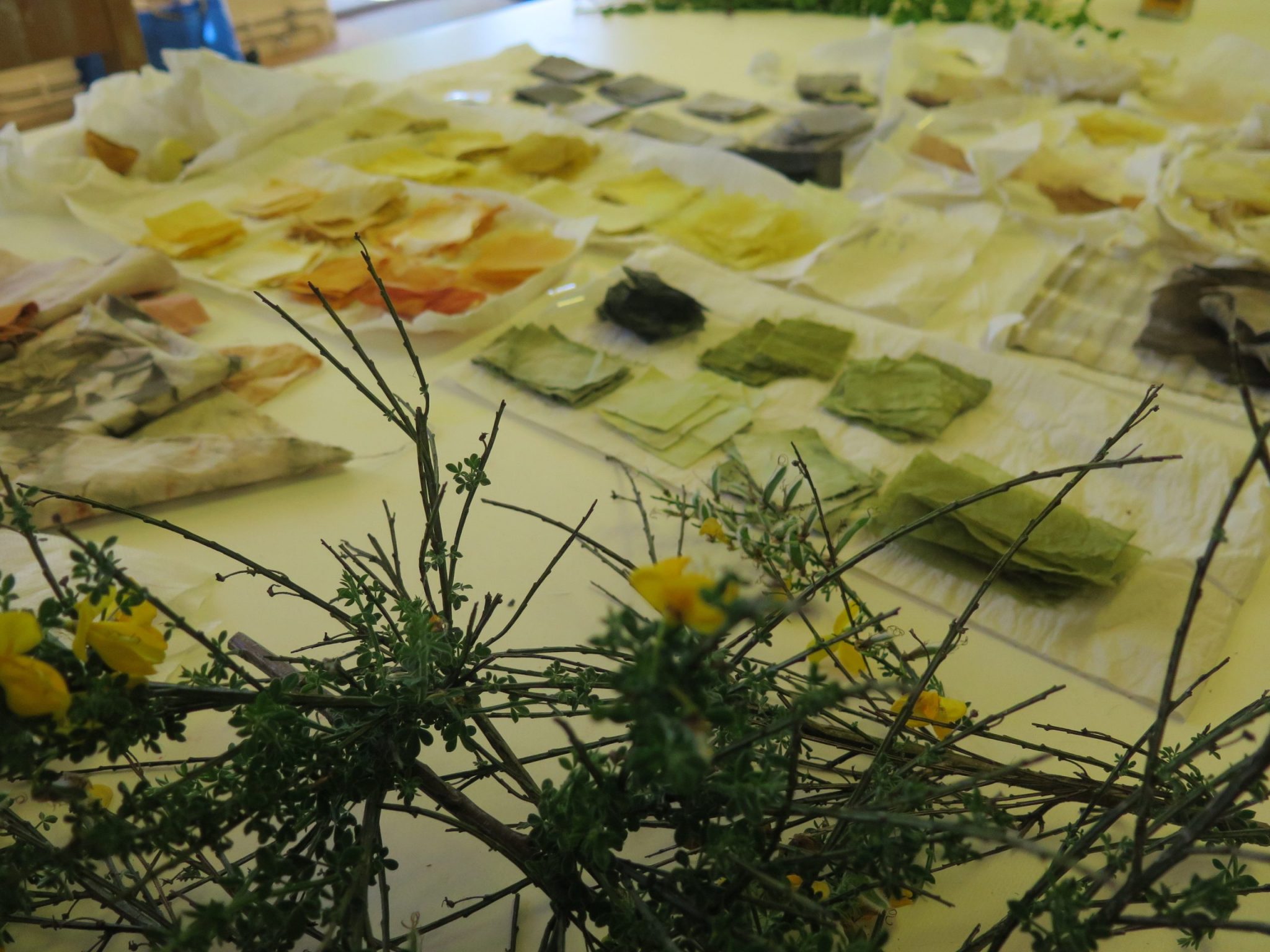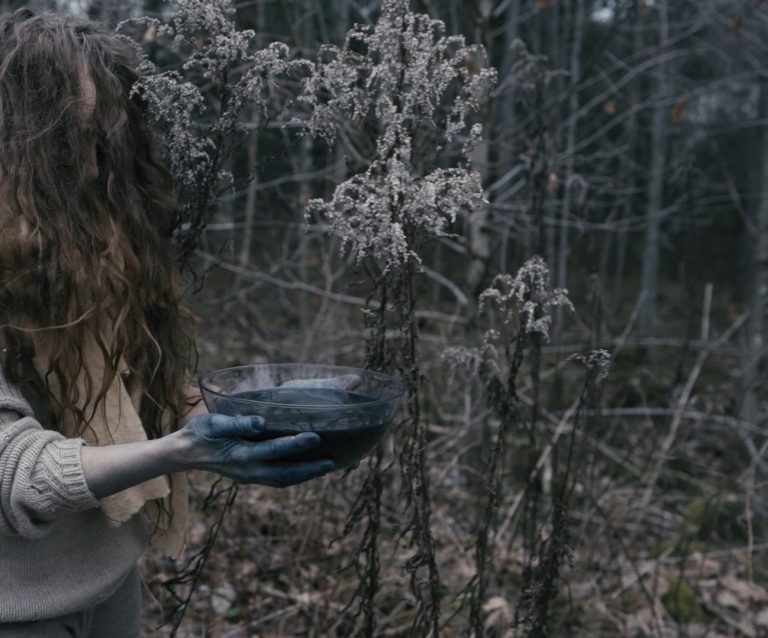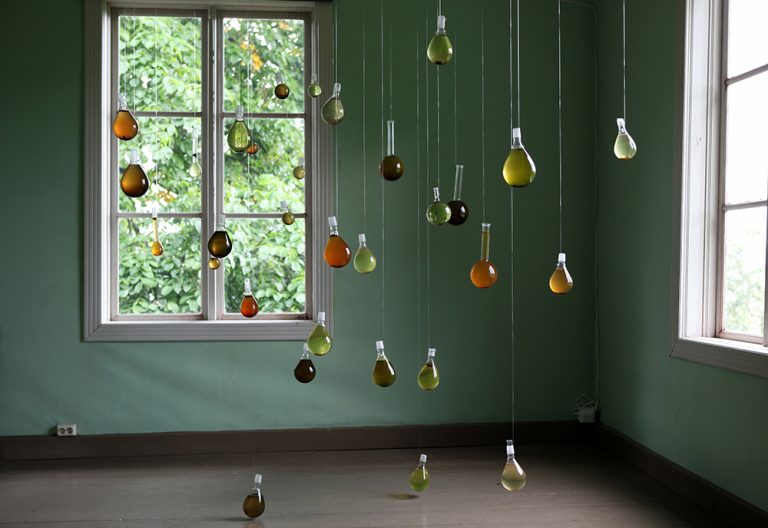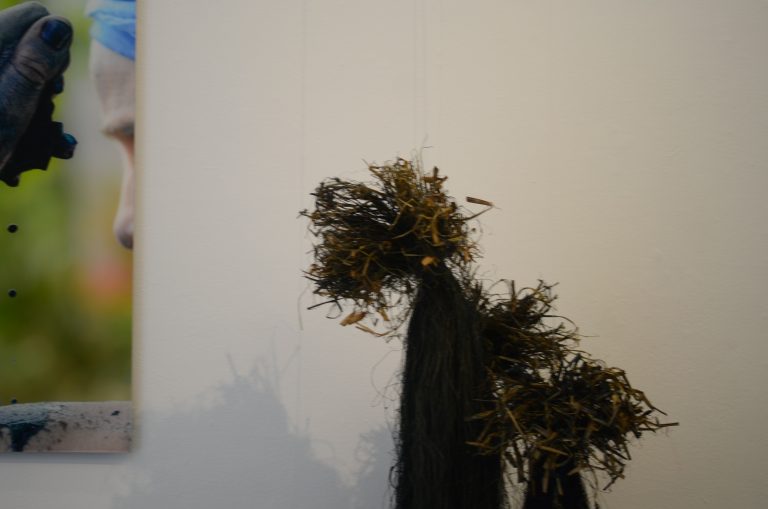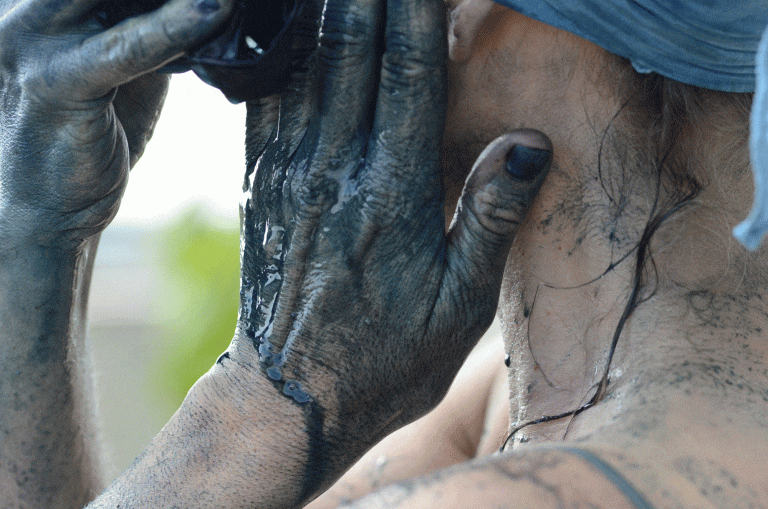Artist in Residence at HDK Stenbeby, Gothenburg University.
A six-month residency in the year 2012
Visualising the future of natural colour at Steneby
The proposal
I work in a close relationship with the material, sensitively experimenting and exploring. Using time-consuming and dynamic natural dye colour processes; the importance of each step can influence the final result – the process. Complex sequences give natural colours their extraordinary wealth and changing subtle nuances. I work with a broad range of organic colour tones from botanical sources that are unusual and reflect the light in unique and distinct ways. My holistic interest in nature and human ecology works in parallel with how I create colour from the seed and soil to my expression. I break down the different processes into small systems and then assemble them into an expression. The material/fibre and biological colour force transforms into a unified physical form.
It is an ongoing dialogue, where location, flora, water, people, time, light and sound are part of my work. I often combine my work and process with photos, moving images and sound.
Natural colour pigments are an essential aspect of our ecosystem, the interaction between plants and animals; the colour affects our moods and strengthens our immune systems, unlike any synthetic colour could ever do. Isn’t the natural pigment in healthy food essential? Botanical colour can offer an alternative to synthetic colour pigment –biodegradable plants that can be resown and regrown without toxic chemicals.
Water is a most mystical, complex and critical element in the natural colour palette, an element I became most interested in and it presented a significant part of my current expression and work; exhibitions at Linne’trädgården Uppsala, Gustavianum Museum Uppsala och Ronneby Kulturcentrum 2011. Water: we all use it and abuse it, I wanted to visualise the water, its complexity and its’ sensitivity by dynamic colour processes through time. In my artistc research with Natural Dye I discovered a plant material that gives vast colour indications in water of differing origins and makeup, a fascinating experiment that has begun an experimental collaboration with the Department of Analytic Chemistry at Uppsala University.
I have a communication with the plants and I am attracted to how we understand these pigment frequencies. With experience, I have seen that when we begin to look around at our surroundings and take recognition of the plants around us, we also change our perception and relationship with nature. I am interested in place-related work, utilising the nature, plants and resources that surround us, sustainably. A lot of what ends up in the compost bin and other plants ‘weeds’ can be used to make beautiful colours. Natural colour pigments harmonise with one another in a way that only botanical colours can, the colour is vibrating, intensive, living and changing with age. Colour from one plant can produce many different possibilities depending on soil type, the environment, weather, season, material and source of water.
I have an organic and ecological intention and understanding –with big respect for those living organic processes and connections that transform colour and fibre. I am interested in starting dialogues around natural colours and the interconnectedness within nature and how we can explore, progress and express ourselves sustainably.
Visualising the future of natural colour at Steneby, an area shrouded with nature and water would be an interesting place to explore a residency. The school’s location is accessible to nature, to explore environmental and sustainable processes for colour and pigment, creating with nature. I would like to investigate the surrounding flora and initiate colour processes: working outside and inside, where I can share and evolve; to share and involve people and students to take a part in my work as I work at my own pace and process. What kind of botanical plant can be used at Steneby? What is thrown in the compost heap from the kitchen waste? What kind of colour can be achieved from the water sustainably surrounding Steneby? I also would like to start water processes that could stand for example in the Magazine (down by the water) in large glass jars, an exhibition: where the colour will change with time (a few months). These can be accessible for others to follow. I can help to establish and mentor a scheme for the growing possibilities of colour plants in the small growing house at Steneby.
